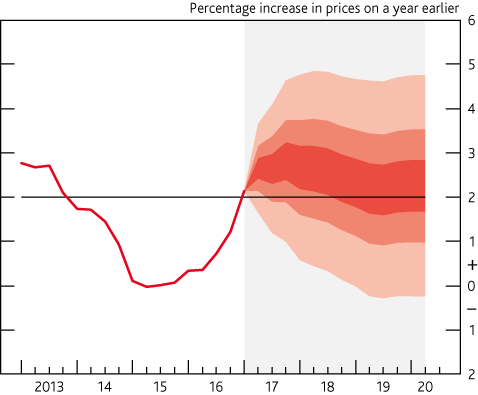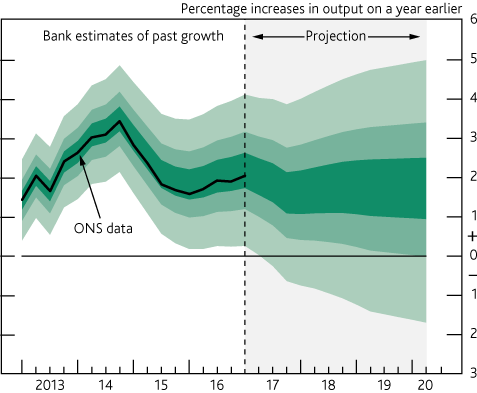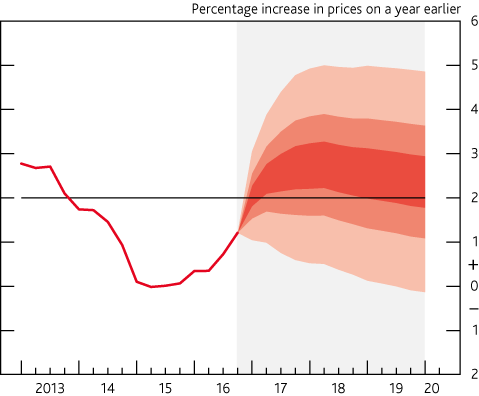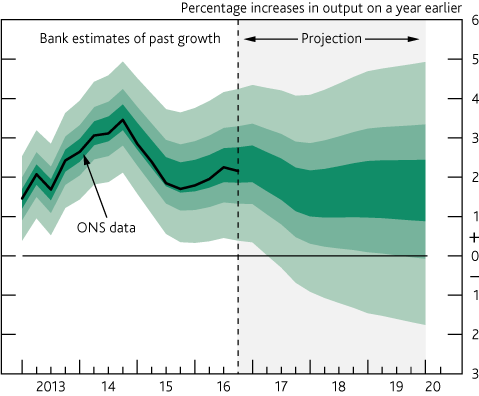Global economic and financial market developments
Indicators point to continued solid global GDP growth in the near term, and equity prices have risen further. Probably reflecting changing perceptions among investors over the risks to growth, market interest rates have fluctuated in many advanced economies, and they have fallen in the United Kingdom. The sustainability of current rates of global GDP growth in the medium term is likely to depend on a recovery in productivity growth in many advanced economies.
Read more on global economic and financial market developments
Demand and output
Output growth slowed to 0.3% in the preliminary estimate for Q1. That was probably driven by slower household spending growth, which is projected to remain weak over 2017 as higher import prices weigh on households’ purchasing power. Business investment fell in 2016 but most surveys point to a modest pickup in investment growth over 2017. The depreciation of sterling and strength in global demand have supported net trade and should continue to do so.
Read more on demand and output
Supply and the labour market
Wage growth has remained modest in recent months, and employment growth has been subdued. While unemployment has continued to fall, a little slack is judged to remain in the economy. And although productivity growth picked up in 2016, it is expected to remain subdued over 2017. Consistent with this, wage growth is projected to remain modest in the near term, before recovering further ahead.
Read more on supply and the labour market
Costs and prices
CPI inflation was 2.3% in March, having been below the 2% target over much of the past three years. Inflation is expected to have risen further since then, reflecting the continued pass-through of the past fall in the sterling exchange rate to consumer prices. The outlook for inflation will depend on how firms respond to those rising imported costs given domestic cost pressures, the strength of demand and inflation expectations. Inflation expectations have risen from recent lows and are judged to be broadly consistent with the MPC’s 2% target.
Prospects for inflation
Inflation has risen above the 2% target as the falls in the sterling exchange rate since late 2015 have begun to feed through to consumer prices. Quarterly GDP growth has slowed, in part reflecting the impact of lower real income growth on household consumption. Through its effects on costs, the fall in sterling is likely to keep inflation above the 2% target throughout the next three years. Where inflation settles once that upward pressure fades will depend on domestic price pressures. Conditional on current market interest rates, which suggest only one 25 basis point rate rise over the next three years, those domestic cost pressures are judged likely to be building towards the end of the forecast period.




